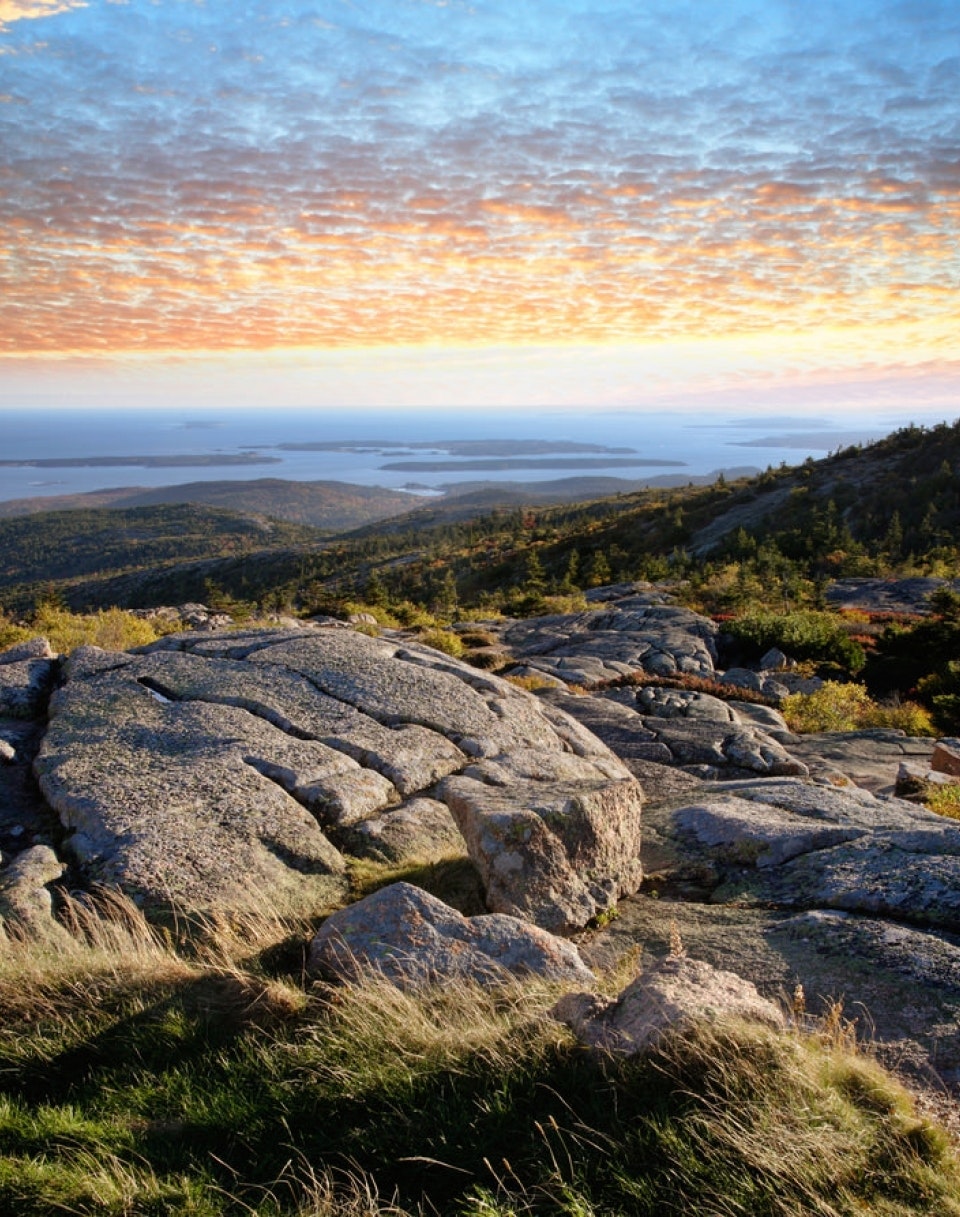
.
.
Acadia National Park

Laws change; people die; the land remains.
Acadia National Park offers hiking, biking, camping, breathtaking views of jagged coastlines, and pristine lakes.
Comprised of a cluster of islands along the jagged Maine coast and a section of mainland on the Schoodic Peninsula, Acadia National Park has a variety of landscapes including granite-domed mountains, woodlands, lakes, ponds, and ocean shoreline. More than two dozen mountains rise above the rocky shore, including Cadillac Mountain, which at 1,530 feet is the highest point on the U.S. Atlantic coast.
Hiking and biking are popular Acadia National Park activities. There are more than 130 miles of hiking trails to explore by foot and 45 miles of carriage roads to travel by bike. These byways were established and maintained in the 19th and early 20th centuries by local improvement societies.
In 1919, Acadia became the first national park established east of the Mississippi River. Following the footsteps of the earliest advocates of the parks, a generous conservationist protected and donated 6,000 acres of land for the creation of Acadia National Park.
The National Park Foundation has long been an advocate for Acadia, including a recent completed program to improve views of the spectacular night sky, as Acadia is one of the best places on the east coast to view the Milky Way.
Park Updates
-
UpdateNPF Invests $4.6 Million to Tell a More Complete American Story
-
UpdateInvesting in Employee Housing
-
UpdateNPF Invests $5.8 Million in Service Corps Program
-
UpdateCelebrating World Ranger Day: NPF and L.L.Bean Are Investing in Park Housing
-
UpdateNPF to Support Youth and Community Fishing Experiences in Parks Across the Country
-
UpdateNPF Invests in Park Partner Organizations to Further Capacity-Building Goals
-
UpdateNPF’s ParkVentures Program Awards $2.2 Million to Affinity Groups
-
Update$4.4 Million to Fund 99 Open OutDoors for Kids Projects for 2023 – 2024 School Year, Hitting Program Milestone
-
UpdateNPF Invests $5 Million in Service Corps Programs
-
UpdateAcadia National Park Welcomes Three Fellows
-
UpdateNPF and Subaru: Addressing Gaps in Exposure, Access, and Opportunity
-
UpdateNPF Invests $1.7 Million in Park Partners